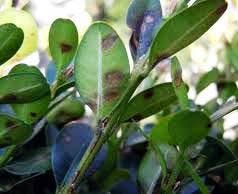If your boxwood still looks bad, it's time to take action. Here's how

Last year’s growing season was very hard on the most frequently used evergreens in most landscapes: boxwoods. Many of you had to replace them, and some are still waiting for them to recover. I’m sorry to say, at this point, what looks bad isn’t going to recover.
The trouble started just before Christmas in 2022. That was when the temperature dropped 50 degrees in 12 hours to sub-zero temperatures. The severe drop was very harmful to many evergreens, including boxwoods.
Boxwoods that perished or were severely damaged were most likely weakened ahead of the freeze by insect damage. There are two insects, Boxwood Psyllids and Boxwood Leaf Miners, that have been growing in population. They become active in the late spring. The damage is evident by yellowing and browning leaves, but these insects will not kill a shrub on their own.
Odds of Boxwood Blight in Cincinnati area low
In recent years, boxwoods have also become vulnerable to diseases known as Boxwood Blight. These diseases are just now finding their way into our area. Right now, the odds of having this disease are extremely low.
There are two different pathogens that cause two types of Boxwood Blight. Once infected, boxwoods rarely recover. The symptoms are very distinctive: the stems of the plants will turn black, there will be black spots on the leaves, and the most distinctive symptom is the plant will defoliate in sections.
Infected plants should be removed and destroyed. Before removal, positive identification of the disease should be confirmed. This can, and should, be done by submitting samples from suspect plants to Ohio State University’s Plant and Pest Diagnostic Clinic (ppdc.osu.edu) for diagnosis.
Both the insect and disease problems are causing concern about using boxwoods in our landscapes. Over the last few decades, most homeowners have replaced old, overgrown Japanese Yew with boxwoods. This is because boxwoods are much easier to maintain, and deer won’t eat them.
Don't abandon boxwoods; learn to adjust maintenance
There are few alternatives to boxwoods for versatility, as the reliability is in question. I do not believe anyone should give up on boxwoods, but it is time to adjust how we maintain them.
The insects are easy to control. This can be done by using a systemic insecticide through a soil drench. The insecticide is mixed with water in a watering can or bucket. Then it is simply poured into the soil at the base of the plant.
The insecticide is absorbed into the plant through the roots, and it stays inside the plant all season. When insects feed, they are killed. The insecticide only affects the insects feeding on the boxwoods. Using the insecticide should be done before the end of the month to allow time for it to get into the plants.
Although Boxwood Blight is still very rare, it is worth concern. The best strategy to avoid the threat of these diseases is to plant new, blight resistant varieties.
If you are replacing older boxwoods or looking for new evergreens, look for these newer blight resistant varieties. One variety is named Newgen Freedom. "Newgen" is short for "New Generation," and they are bred to be more disease and insect resistant.
Another boxwood variety you can plant with confidence is Green Gem. This one is a smaller variety. The Newgen Freedom can grow to 4-5 feet tall and wide if not trimmed, but Green Gem will be much easier to maintain at 2-3 feet tall and wide.
As a man with the name McKeown, I am a descendent of Irish heritage. On St. Patrick’s Day I’d like to leave you with an Irish blessing: May flowers always line your path and sunshine light your day.
This article originally appeared on Cincinnati Enquirer: If your boxwood still looks bad, it's time to take action. Here's how
